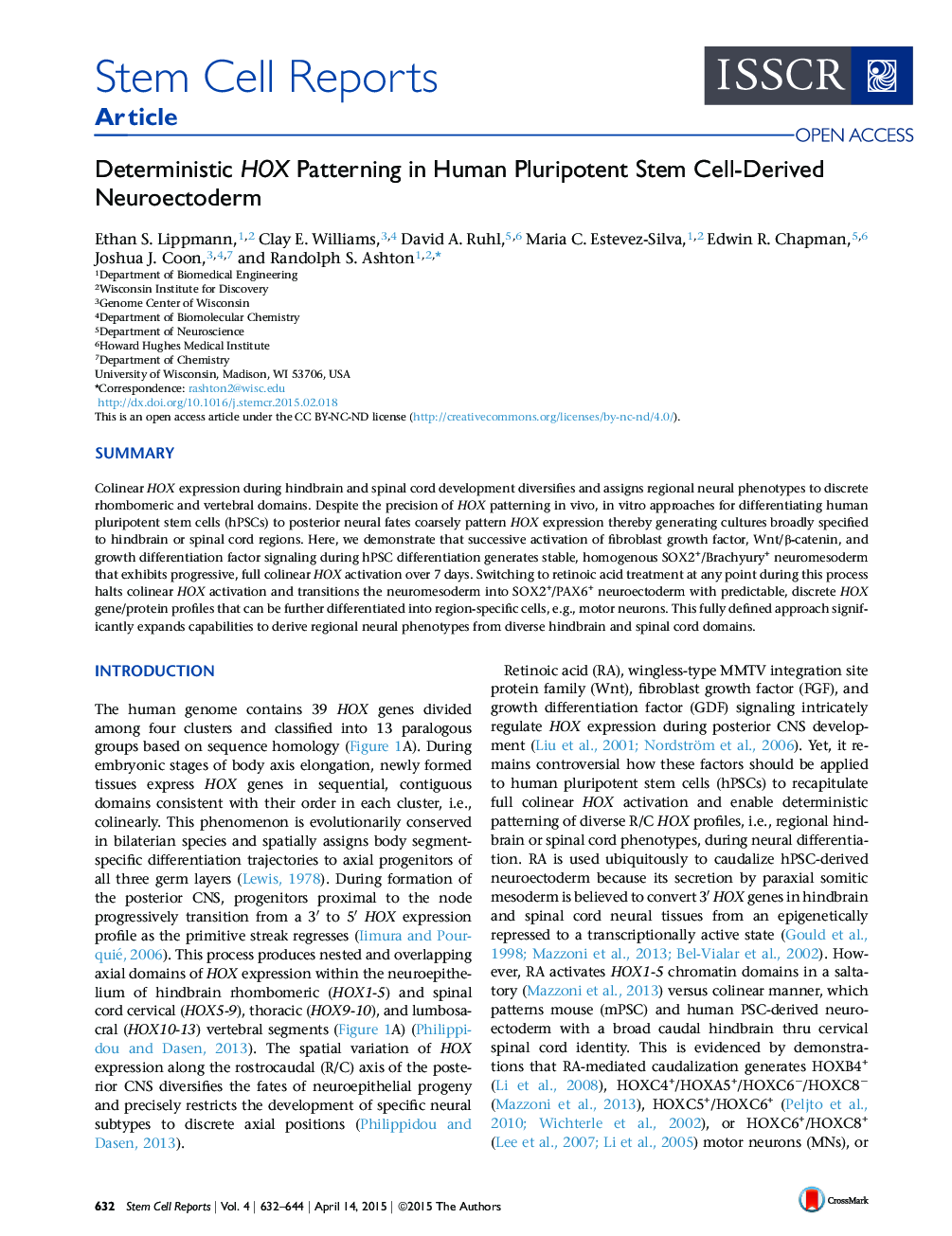| Article ID | Journal | Published Year | Pages | File Type |
|---|---|---|---|---|
| 2093613 | Stem Cell Reports | 2015 | 13 Pages |
•Deterministic HOX expression in hPSC-derived neuromesoderm progenitors (NMPs)•Wnt/β-catenin, FGF, and GDF signaling regulate HOX activation in NMPs•Retinoic acid (RA) transitions NMPs to neuroectoderm and halts HOX activation•Neural cells can be patterned to any rostrocaudal hindbrain or spinal cord domain
SummaryColinear HOX expression during hindbrain and spinal cord development diversifies and assigns regional neural phenotypes to discrete rhombomeric and vertebral domains. Despite the precision of HOX patterning in vivo, in vitro approaches for differentiating human pluripotent stem cells (hPSCs) to posterior neural fates coarsely pattern HOX expression thereby generating cultures broadly specified to hindbrain or spinal cord regions. Here, we demonstrate that successive activation of fibroblast growth factor, Wnt/β-catenin, and growth differentiation factor signaling during hPSC differentiation generates stable, homogenous SOX2+/Brachyury+ neuromesoderm that exhibits progressive, full colinear HOX activation over 7 days. Switching to retinoic acid treatment at any point during this process halts colinear HOX activation and transitions the neuromesoderm into SOX2+/PAX6+ neuroectoderm with predictable, discrete HOX gene/protein profiles that can be further differentiated into region-specific cells, e.g., motor neurons. This fully defined approach significantly expands capabilities to derive regional neural phenotypes from diverse hindbrain and spinal cord domains.
Graphical AbstractFigure optionsDownload full-size imageDownload as PowerPoint slide
